This Air-Minded post is from March 2014. I was thinking about the Douglas Skyknight yesterday, and after reviewing what I had written about it earlier, decided to move the post to the top of the queue. —Paul Woodford
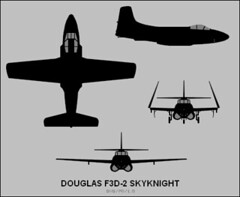 There’s a Skyknight on display at the Pima Air & Space Museum in Tucson, Arizona, where I work as a volunteer tour guide. It catches my eye every time I walk past it, maybe because it’s so different. I decided to take some photos, do some research, and write about what I learned. Turns out the old tub—also known as Willie the Whale, the Turtle, and the Drut (spell it backwards)—was a far more significant aircraft than I had imagined.
There’s a Skyknight on display at the Pima Air & Space Museum in Tucson, Arizona, where I work as a volunteer tour guide. It catches my eye every time I walk past it, maybe because it’s so different. I decided to take some photos, do some research, and write about what I learned. Turns out the old tub—also known as Willie the Whale, the Turtle, and the Drut (spell it backwards)—was a far more significant aircraft than I had imagined.
I remember building a model of this airplane during the 1950s. I built a lot of models as a kid and have surely forgotten most of them, but that one stuck in my mind. All I knew about the Skyknight at the time was that it had been one of the Navy’s first jet fighters. It struck me as antiquated with its straight wings, bulky fuselage, and side-by-side seating, so unlike the other jet fighters developed after WWII. If anyone had told me then that Skyknights were still flying, or indeed that they would continue flying for many years to come, I would have scoffed—surely the type had been long retired, replaced by sleeker designs like Douglas’ F4D Skyray or A4D Skyhawk.
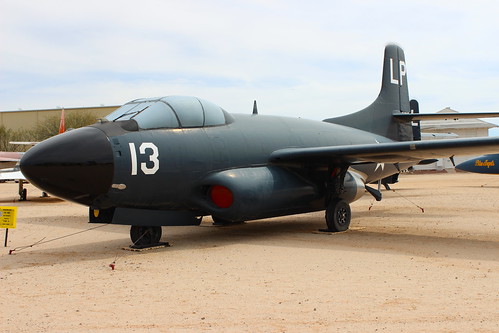
The Skyknight originated with a 1945 Navy requirement for a jet-powered, radar-equipped, carrier-based night fighter. The prototype flew in March 1948 and the Navy ordered 28 production F3D-1 aircraft few months later. In August 1949 the Navy ordered a second batch of 237 aircraft, an improved version called the F3D-2. The first F3Ds entered USN and USMC service in 1950, and although production ended in March 1952, Skyknights remained in service until the 1970s.
The F3D-1 never deployed outside the United States, but was used to train aircrews who then flew the F3D-2 in combat in Korea. In 1962, when Secretary of Defense Robert McNamara ordered the military services to adopt a uniform aircraft designation system, the remaining F3Ds became F-10s. An electronic warfare variant, the EF-10, saw combat in Vietnam. The last military Skyknight, an EF-10B assigned to the Marine Corps, was retired in 1970.
After the Skyknight’s retirement a few aircraft were given to Raytheon to use in missile and radar testing, and at least one of these was still flying in late 1978 at Holloman AFB, New Mexico, where I used to see it while going through USAF fighter lead-in training.
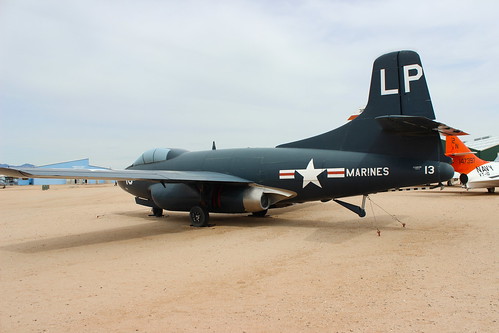
What was so significant about the Skyknight? For one thing, it was built around three separate radars: two search and tracking radars located in the nose plus a tail warning radar in the aft fuselage. The size of these early vacuum tube radars dictated the Skyknight’s wide, deep fuselage, side-by-side crew seating arrangement, and the location of the engines in pods located on the outside of the lower fuselage. The search radar was surprisingly effective for its time, able to pick up bomber-sized targets at 20 miles and fighter-sized targets at 15. The tracking radar could lock on at 4,000 yards and guide the Skyknight all the way in to a firing position behind the target. The tail warning radar could detect attacking aircraft as far as 4 miles away, giving the Skyknight crew ample time to react.
In the pre-missile days of the Korean War, the F3D made its mark as a night fighter. Skyknight crews used the radar to acquire enemy aircraft and close in, unobserved, for the kill. The F3D was actually the most successful Navy or Marine Corps air-to-air fighter of the war: USMC Skyknight crews were credited with six kills (one Polikarpov Po-2, one Yakovlev Yak-15 and four MiG-15s). During the initial part of the war Skyknight crews got their kills with the four 20mm cannon located below the nose; later on they used air-to-air rockets to supplement the guns.
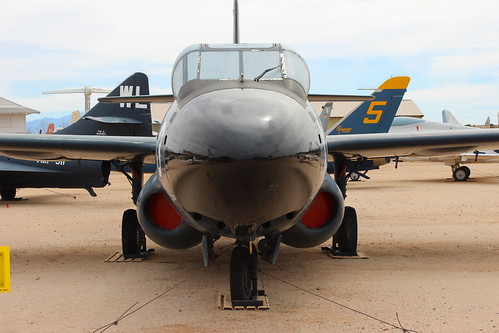
Also of significance (at least from my point of view as a former USAF fighter pilot): immediately after the Korean War the Skyknight was used to test the first generation of air-to-air radar-guided missiles, and in fact it became the first Navy jet to carry an operational air-to-air radar missile: the Sparrow I, the ancestor of the AIM-7 Sparrows I carried on my F-15 Eagle.

Douglas proposed an evolutionary version of the Skyknight in 1959, the F6D Missileer, in an effort to win a Navy contract for a carrier-based fleet defense missile fighter. The Missileer was meant to carry an advanced long-range air-to-air missile called the AAM-N-10 Eagle. Although nothing came of that effort, the Missileer’s weapon system and side-by-side crew arrangement was later adapted for the General Dynamics-Grumman F-111B, which was to have been the Navy version of Robert McNamara’s joint service fighter, and which was to have carried another advanced long-range air-to-air missile, the AWG-9 Phoenix. The F-111B was built and tested, but the Navy eventually rejected it and developed the F-14 Tomcat instead, which also employed the Phoenix missile. The USAF, of course, flew versions of the F-111 fighter/bomber for many years.
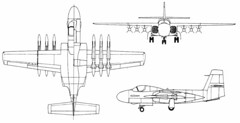 |
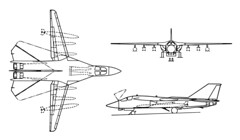 |
Speaking of the side-by-side crew seating arrangement, one of the details I remember from building that Skyknight model way back when was the escape chute. Although ejection seats were in use at the time the F3D was designed, they weren’t yet safe for side-by-side operation, so the Skyknight came with a more primitive escape system. In the event the crew had to bail out, they would depressurize the cockpit and pivot their seats toward each other. The first crewmember would get out of his seat, face aft, and kick open the escape chute door, which would presumably fall out and away through the chute. Grasping a horizontal bar, the crewmember would swing into the chute feet first, then slide out the belly of the aircraft, followed by the second crewmember. Here are some photos of the escape sequence:
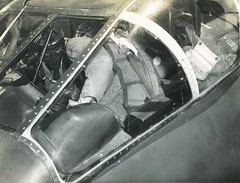 |
 |
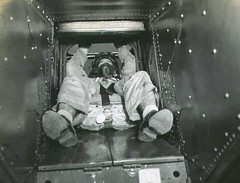 |
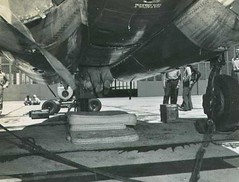 |
I had no idea the Skyknight played such an important role in air-to-air radar and missile development, or that many of the systems and concepts it tested and proved live on today, not only in the F-15 Eagle that I flew, but in fifth generation air-to-air fighters as well. I don’t know about you, but I’m impressed.
References:
Hi Paul,
Raytheon also had a Skyknight at the former Hanscom AFB in Bedford MA that I remember seeing in the late 1970’s. It was painted in white and orange and sat in front of their hangar for ages. I only ever saw it fly once during my “airport rat” era, which was most of my high school years. I don’t know when they got rid of it, but it was sometime after 1978.
Thanks for the article and pictures of the Drut.
Thanks for the comment, Pete. I wonder if maybe there’s still one at Edwards AFB. Lots of interesting old-timers still playing obscure test roles there. Probably not, though.
Thank you very much for such an informative article.